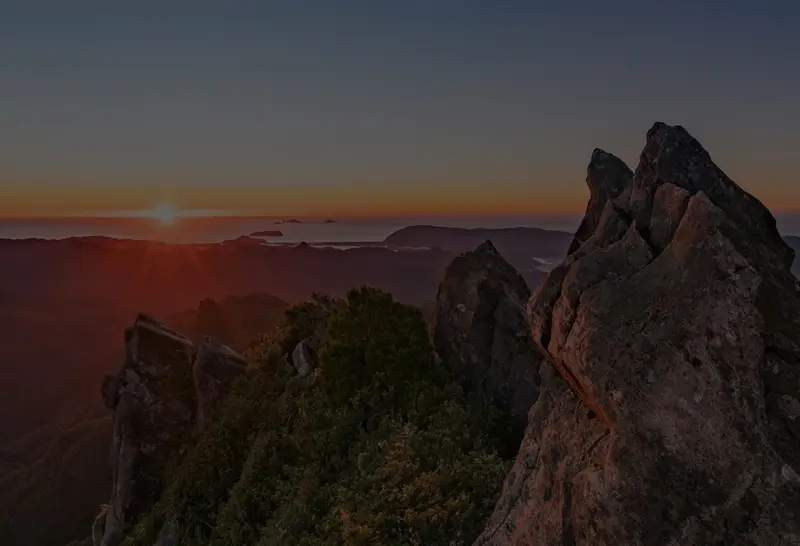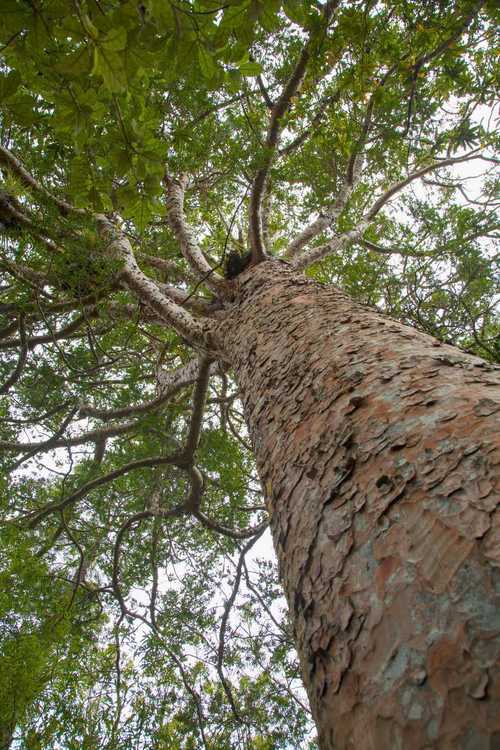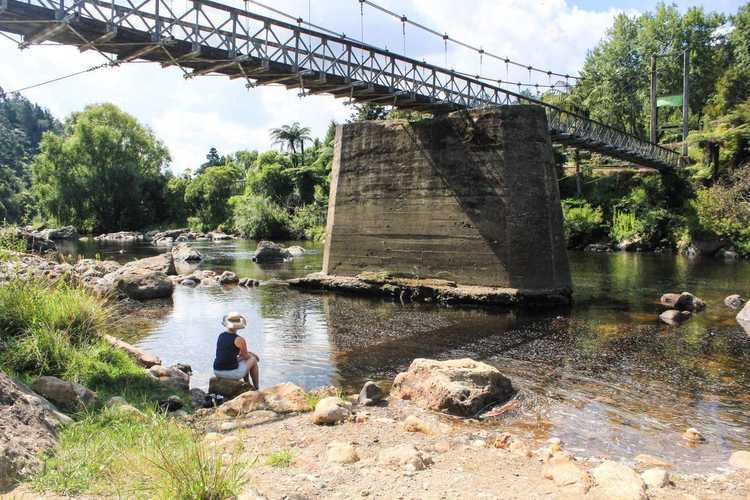
“It has often been asserted that the Hauraki Peninsula is a goldfield from one end to the other, and the numerous discoveries of the last few years would certainly seem to justify this conclusion. The wide gaps which at one time existed between the older-established goldfields are being gradually filled up, while the boundaries of all the fields are being continually extended.”
(Notes on the Geology
of Kūaotunu
Goldfield.)
By James Park, F.G.S., Lecturer, Thames School of Mines. [Read before the
Auckland Institute, 19th June, 1893.]
The Coromandel’s history is flecked with gold. Its discovery made a significant contribution to New Zealand’s economic growth in the late 19th and early 20th century. Infrastructure was developed in response to rising population, as shops, businesses and hotels sprang up to meet demand. Thames engineering firm, A & G Price started their business by manufacturing mining equipment. The Paeroa–Waihī railway was prioritised to enable access to transporting gold from Karangahake Gorge. The Coromandel was the first place gold was discovered in New Zealand, initiating feverish migration to the area, with prospectors seeking to find their fortune in the deep veins of the Coromandel Ranges.
Between the 1860s and the 1920s, there were two major booms in gold production in The Coromandel. In the 1860s, gold diggers flocked to the area in search of alluvial gold. In the decade after 1900, as methods to extract the gold developed, underground hard-rock mining produced greater capacity.
Coromandel Town and Thames were the first dominant goldfields, followed by Waihi, which by 1903 had the biggest mine in New Zealand. Smaller mining settlements popped up around the eastern peninsula during the early 20th century, including Kūaotunu, Broken Hills-Puketui Valley and others.
1852-1867 Early Discoveries
In 1852 a reward of £100 for the discovery of a payable goldfield near Auckland was announced. When the reward was increased to £500, sawmiller Charles Ring took up the search. Maori leader Te Horeta gave Charles Ring and his brother Fred permission to search his land and it was there, at Driving Creek, near Coromandel Town that Charles found golden flakes in his pan. His find led to a small patch of alluvial gold, yielding less than £1,200. Accessible alluvial gold ran out after a month, and it wasn’t until a decade later the area was declared a goldfield following the discovery of gold-bearing quartz.
It was in Thames in 1867, that the first big strike occured. William Hunt, a prospector, identified a speck of gold in the rock face of a waterfall in Kuranui Stream. Following negotiations with Maori landowners, the Thames goldfield was declared open in 1867. Other reefs were uncovered and the rush began as men swarmed to the Thames foothills to mine the untapped area.
The Coromandel terrain proved hazardous and difficult to mine. Men burrowed and removed rock from the hills, leaving them unsafe. Trees and bush were stripped leaving the hills bare. Most of the gold in The Coromandel was to be found in quartz reefs deep within hard rocks, rather than the more accessible alluvial deposits. Quartz reefs required machinery and equipment to mine the ore, crush it and extract the gold, so eventually companies took over from individuals, setting up stamper batteries and beginning large scale mining production. The first commercial use of a new process using cyanide solution to recover gold was at the Crown Battery at Karangahake in 1889.
1868-1871 Boom time for ThamesShortland and Grahamstown were the two settlements of The Thames established during the gold rush. The Thames was the 4th biggest town in NZ at the time, with buildings and industry expanding at a rapid rate to meet the demands of the rising population. The era from 1868 to 1871 were boom times for Thames with gold production topping one million pounds sterling at its peak. At Grahamstown a wharf was built, then the Stock Exchange and the Bank of New Zealand were built. The first local paper, The Thames Advertiser arrived and the Thames Hospital was established, responding to the urgent need for organised medical care as a result of the hazards of mining.
By the end of the 19th century, Thames was the largest centre of population in New Zealand with 18,000 inhabitants and well over 100 hotels and three theatres. The Thames School of Mines; one of 30 national Schools of Mines was opened in 1885. Schools at Waihi and Coromandel followed. The schools taught assaying work, which determined how much gold was contained in quartz samples. The curriculum eventually expanded to embrace agricultural science, pharmacology and other engineering disciplines before it eventually closed in 1954.
1889-1915 Other parts of The Coromandel
Coromandel
Town
Coromandel Town continued to benefit from
miners early interest and by its peak was a bustling town with 12,000 residents and 19
hotels. In 1898, The
School of Mines was built to teach all aspects of mining and mines engineering. In
1900, the Coromandel Gold Stamper was commissioned by the New Zealand Government and
opened. It's purpose was to process gold ore from over 65 different mines in the
Coromandel area. The Stamper Battery, was powered by New Zealand's biggest working water
wheel and was the first diesel-powered gold processing plant in New Zealand.
Kuaotunu
Kuaotunu
was the most productive goldfield on the eastern Coromandel, after the discovery of
gold-bearing reefs on the Bald Spur and Waitaia Ridge in 1889. The Try Fluke and
Kapa-Vermont mines were opened up and the Kapai-Vermont Battery was established. The
Kuaotunu School of Mines opened; one of four Schools in The Coromandel. The village became
a bustling community with shops and services such as a tailors’ and a butchery. However,
by 1915 gold workings were exhausted and so too was the town’s livelihood. Many of its
buildings were dismantled and shifted to Whitianga and Auckland.
Golden
Hills, Puketui Settlement
Just south of Tairua, a small settlement called Puketui sprang up
with the discovery of gold in 1896. Alongside nearby Golden Hills, Broken Hills mine operated
until 1914, with stamper batteries crushing ore and producing gold, employing sixty people
at peak production. By 1912 the riverside settlement had grown to 200 people, however just
two years later, production at the mines tailed off and the size of the settlement
diminished accordingly. Small-scale mining continued in the area until ore reserves were
depleted in 1923.
1875-1920s: Major Mining Production Waihi, Waikino, Karangahake
In 1875 the Waihi area became open to prospecting. A gold rush followed but the miners failed to recognise the potential of the quartz vein deposits they discovered. The Martha vein, discovered at Waihi in 1878 changed Waihi’s fortune. John McCombie and Robert Leed discovered gold on Pukewa (Martha Hill), and underground minings commenced in 1879.
The introduction of the McArthur-Forrest cyanide process at Karangahake in 1889, caused a dramatic increase in gold recovery. The new process made extracting gold from quartz more efficient. This led to the Crown, Talisman and Woodstock batteries being built at Karangahake to treat ore taken from mine networks inside Karangahake Mountain.
In 1897, construction began on the largest quartz crushing plant in Australasia; Victoria Battery at Waikino. It was capable of crushing over 812 tonnes of ore each day to the consistency of sand. It employed around 200 people and the battery also had its own sawmill, blacksmiths and foundry.
In Waihi, Martha Mine quickly became one of the most important gold mines in the world. 600 metres below the surface, a web of tunnels spanned 175 km over 15 horizontal levels, employing around 600 men up until peak gold production in 1909. By that stage, 1500 men worked between the mine and its stamper battery at Waikino. The output from the Karangahake and Waihi quartz mines comprised 55% of the total gold produced in New Zealand. The adoption of the cyanide process at Martha Mine in 1894 was one of its crucial success factors, leading to a major expansion. By 1903 it was the biggest mine in New Zealand, causing Waihi to become the largest town in the region by 1911, with a population of 6,500.
A miners’ strike the following year caused major disruption, with New Zealand’s first death in an industrial dispute. The strike lasted six months and then mining continued until 1952 when the Martha Mine closed. It reopened its opencast pit in the 1980s, following revived gold prices which, formerly fixed, were then allowed to float. The mine is still worked today and is the largest known hard rock mineral deposit in New Zealand.
Gold helped develop the early economy on The Coromandel, by attracting people, investment, shipping and resources. The thunderous din from decades of gold production may have long-since ceased, yet echoes of the era are located in many sites throughout The Coromandel.
(Resource List)
- Thames Goldmine
and Stamper Battery
Guided tours underground and through the Stamper Battery, a
photo museum and gold panning.
- Thames
School of Mines and Museum
A school which taught mining skills from 1886-1954.
Today it displays goldmining artefacts alongside its mineralogical museum.
- The Waihi Gold
Mining Company
Guided tours of Martha Mine available weekdays, but bookings are
essential.
- Waihi Museum
and Art Gallery
Displays on the goldmining history of Waihi district.
- Goldfields
Railway
A one-hour 6.5km-plus trip from Waihi to Waikino and back in a vintage
train.
- Karangahake
Gorge
Walking tracks with relics from the areas mining past.
- Victoria
Battery
Heritage site offering underground tours, museum and tramway.
- Coromandel Gold
Stamper Battery
The first Government Assay Stamper Battery commissioned in New Zealand
and still fully operational, it boasts the country's largest working water wheel.
- Coromandel
School of Mines Museum
Exploring
the area's gold-mining history via photos & artifacts.
- Broken Hills / Puketui Valley DOC Reservation Walking tracks with relics from the areas mining past.











